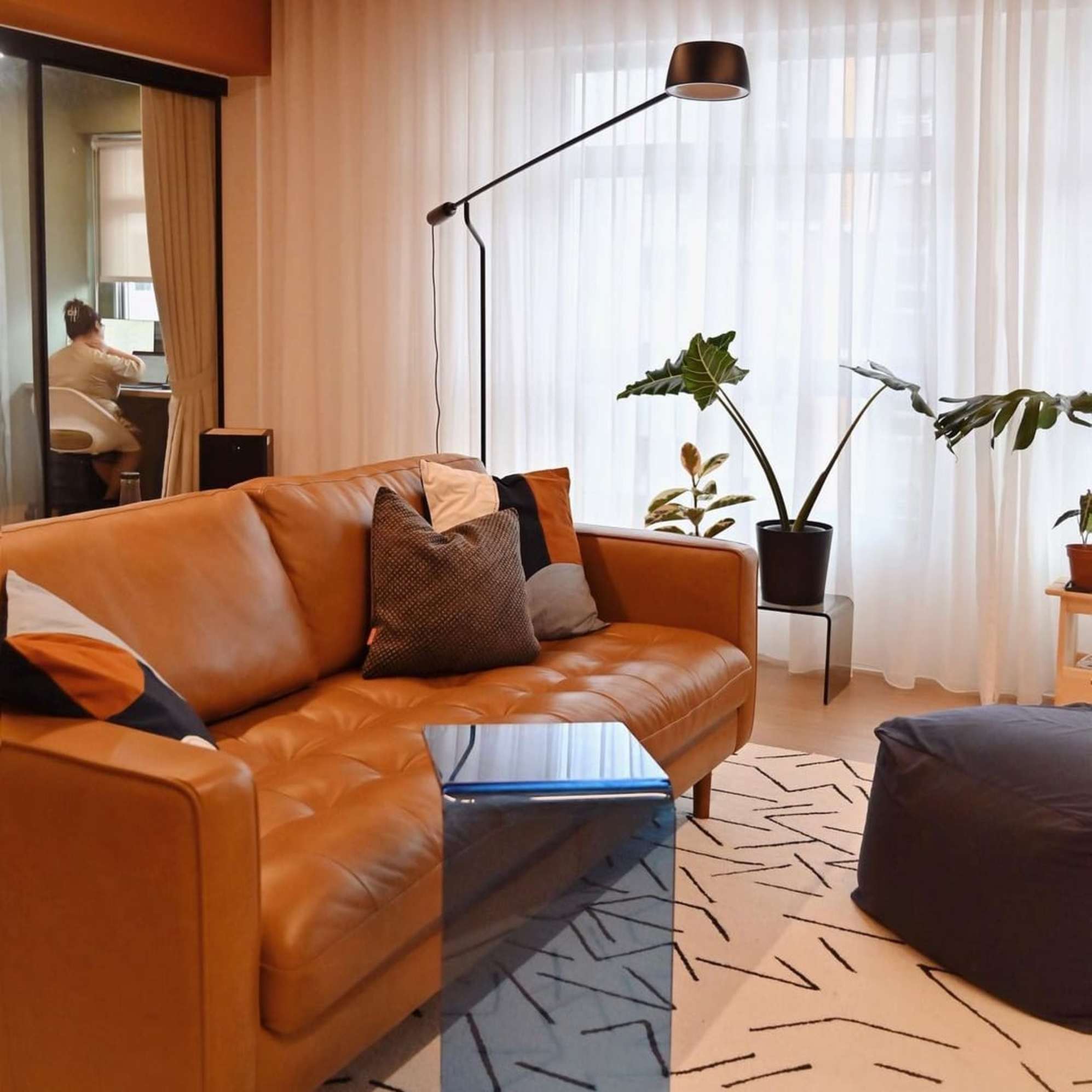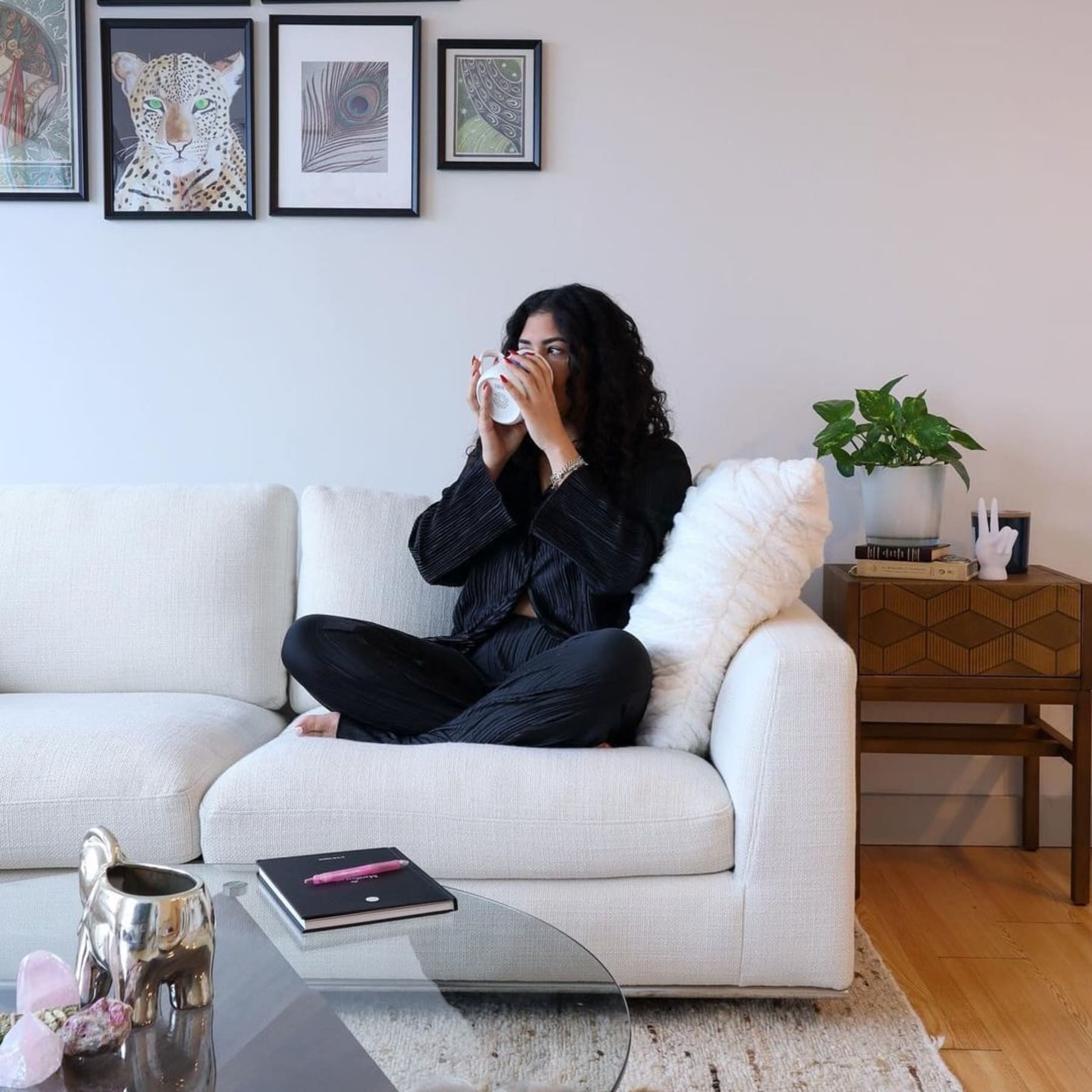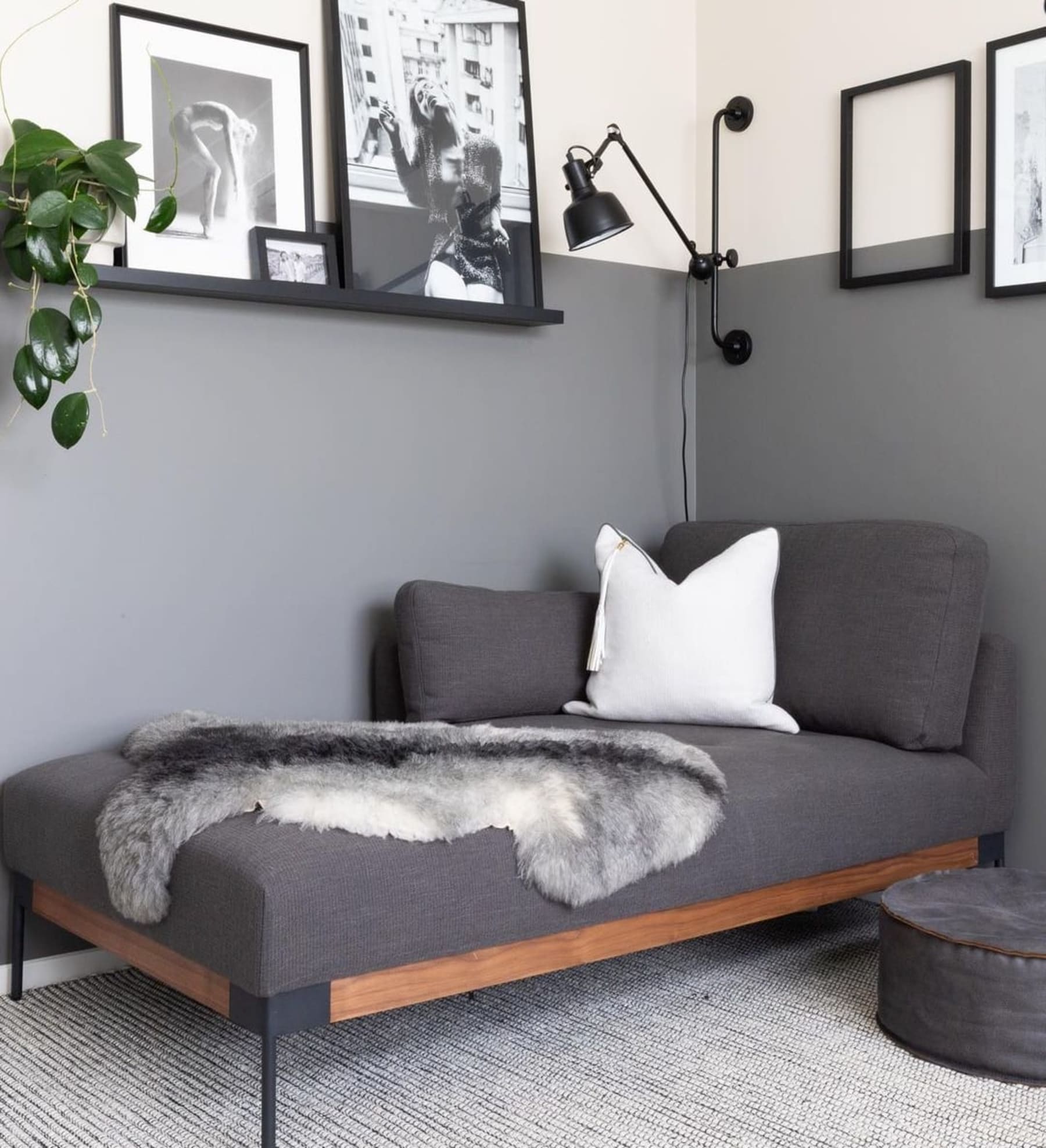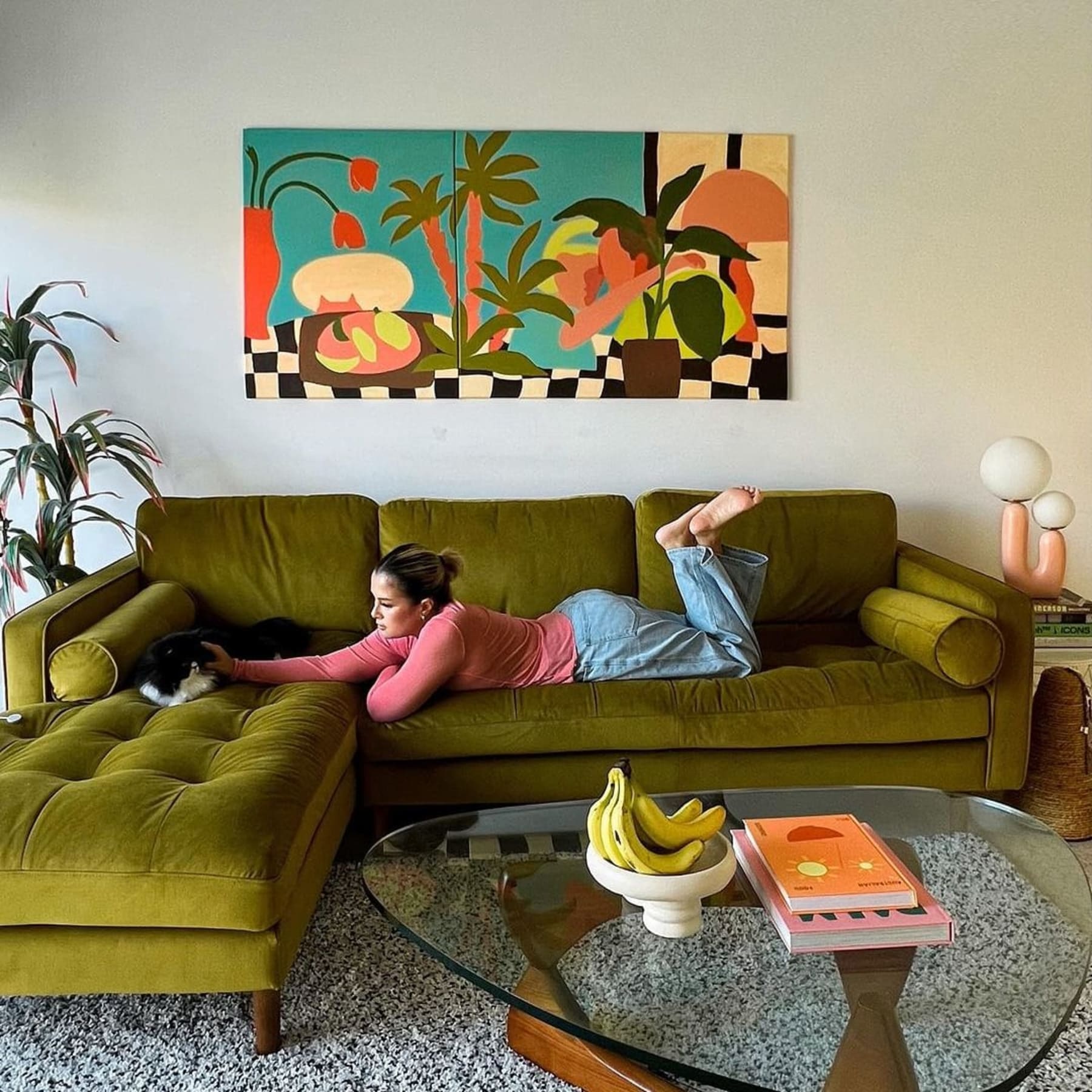
How to Match Your Plants to Your Furniture Aesthetic
Matching your plants to your furniture goes beyond aesthetics. What once used to be absent-mindedly filling your home with greenery has now turned into a more intentional design element to create a harmonious blend between your interior style and nature.
If you’re wondering how to elevate your home design, let’s dive deeper into lesser-explored aspects of plant and furniture pairing. Whether you have a mid-century modern aesthetic or a Japandi vibe in your home, there is a plant pairing out there that can truly bring your home to life.
Plant pairings for 6 interior aesthetics
For mid-century modern styles
If your house heavily features mid-century modern touches like geometric shapes, and the heavy use of natural materials like leather and metal, the Mini Money Tree or Bird of Paradise will be good options.

The Madison Leather Sofa. Picture credits: @ochre.home
The Mini Money Tree gels extremely well with mid-century modern furniture, where pieces feature sleek, uncluttered lines that contribute to a sense of openness and sophistication. The plant has a unique braided trunk that exudes an uncomplicated yet striking appearance. This complements the clean lines of mid-century furniture, offering a refreshing contrast without overwhelming the space.
Another plant that works well would be the Bird of Paradise. The Bird of Paradise features large, banana-like leaves with a unique structure. This architectural quality complements the clean lines and geometric shapes of mid-century modern furniture.
The bold and distinctive foliage of the plant can serve as a striking visual element that echoes the design principles of the mid-century era.
How to pair: Position the Mini Money Tree strategically near iconic mid-century modern pieces, like this Chesterfield-look-alike sofa or a caramel leather sofa. Position the Bird of Paradise in a prominent corner of the room, such as by an accent chair or stylish floor lamp, creating a statement piece that draws attention.
For minimalist styles
Minimalist furniture thrives on clean lines, simplicity, and functionality. Selecting plants that complement this aesthetic involves a thoughtful approach to maintain the essence of minimalism.

The Hamilton Chaise Sectional Sofa. Picture credits: @bostonfoodlist
The ZZ Plant is a hardy statement plant that will be a great addition to minimalist homes. The glossy, layered leaves add a touch of sophistication to the space without overwhelming the aesthetic.
Furthermore, the dark green leaves of the ZZ Plant add a natural, yet neutral, color to the space. This makes it easy to integrate into minimalist color palettes, allowing the plant to complement the overall design without introducing bold or distracting colors.
How to pair: Place the ZZ Plant near furniture with contrasting textures, such as a sleek fabric sofa or a glass coffee table. The plant's upright growth complements the straightforward design of minimalist pieces.
For Japandi styles
Japandi interior style has (and still is) dominated the home design world, with many homeowners choosing this aesthetic that merges elements of Japanese minimalism with the rustic characteristics of Scandinavian design. This fusion results in a balanced and serene interior that features clean lines, natural materials, and a focus on simplicity.

The Owen Chaise Sectional Sofa. Picture credits: @pithinterior
Though extremely versatile, the Monstera, also known as the Swiss Cheese Plant, is a wonderful option to add to your Japandi interior. Its green and lush creates a sense of harmony and connection to nature - something both Japanese and Scandinavian designs appreciate.
How to pair: Place the Monstera plant near Japandi furniture like a cane sofa or an oak dining set. This helps to introduce a pop of color and a beautiful contrast between the furniture and the plant's expressive foliage. Consider placing the plant in a corner or an area where the plant's large leaves can create a visual impact without overwhelming the calm aesthetic.
For rustic, modern farmhouse styles
Modern farmhouse interiors are a blend of contemporary elements with rustic, cozy, and inviting farmhouse aesthetics. When selecting plants for modern farmhouse interiors, it's essential to consider the overall vibe of comfort, simplicity, and a touch of rustic charm.

The Miles TV Console. Picture credits: @v.ii.n.s and @thelocalinnterior
As this style often features wooden furniture or weathered wood, large, robust plants like the Fiddle Leaf Fig complement these natural textures, bringing a bit of the outdoors inside. Its large, glossy leaves add a touch of greenery and sophistication, complementing the cozy characteristic of the modern farmhouse setting.
How to pair: Place the Fiddle Leaf Fig beside a piece of statement furniture, next to a wooden bed, or in the dining room. This approach draws attention to the plant's modern elegance while integrating it into the farmhouse setting.
For industrial chic styles
Drawing inspiration from industrial spaces, this style often combines raw, utilitarian elements with modern and urban touches. This style is characterized by exposed brick, metal finishes, open spaces, and a mix of vintage and contemporary furnishings.

The Ethan Left Arm Chaise. Picture credits: @hausofcruze
Succulents with their sculptural shapes align with the clean lines and angular features often found in industrial chic design. Their visually striking appearance adds a modern touch to the space.
Another plant you can consider is the Snake Plant. These hardy plants with sword-like leaves bring a strong structural element to industrial settings. The upright growth and architectural form of the leaves complement the linear aspects of industrial design.
How to pair: To complement the raw and edgy elements of industrial design, opt for planters made of metal or concrete. Create clustered arrangements of succulents or snake plants in groups of two or three. This arrangement style contributes to the collected and curated look often seen in industrial interiors. You can also place these plants against exposed brick walls or alongside metal shelving units to create contrast and allow the individual plants to shine.
For eclectic, maximalist styles
Eclectic and maximalist styles are characterized by their bold and diverse mix of colors, patterns, textures, and styles. Think rich textures like plush fabrics and metallic finishes, and an assortment of furniture styles that create a curated and collected-over-time look.

The Madison Chaise Sectional Sofa. Picture credits: @chiiloyzagagibbs
Spider Plants or Peace Lilies are suitable options due to their unique characteristics that complement the vibrant and diverse nature of these design styles. Spider plants have arching, variegated leaves that create an interesting and architectural aesthetic. Their distinct foliage adds a playful and dynamic element to eclectic interiors.
On the other hand, Peace Lilies feature elegant, glossy leaves and white blooms that bring a touch of sophistication to maximalist interiors.
How to pair: Arrange Spider plants and Peace Lilies in clusters or groups to create layers of greenery. Experiment with different sizes and heights to achieve a visually dynamic and eclectic look. You can also place them in hanging baskets or as focal points on tables, shelves, or near seating areas.
As you embark on the journey of transforming your living space, let the leaves unfurl and the blooms flourish in your home where furniture and foliage dance in harmony. From Mini Money Trees in mid-century modern interiors to Monsteras that work well in Japandi homes, every home deserves a green companion, no matter the style!